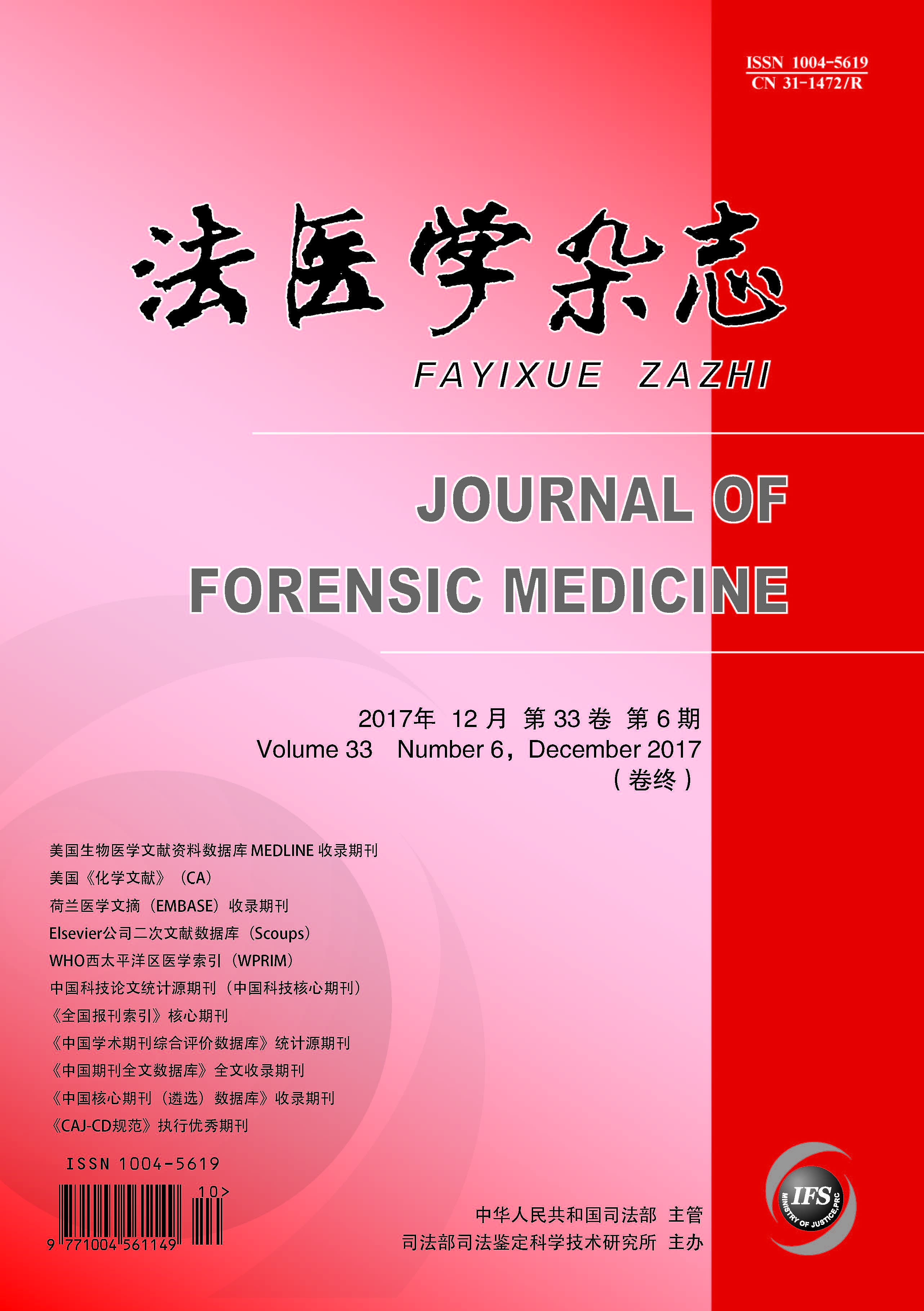|
|
Time-dependent Protein Expressions of MMP-2 and MMP-9 in Liver Contusion Rats after Impact
WANG CHANG-LIANG, XIA ZHI-XIU, ZHANG GUO-HUA, DENG , ET AL.
2017, 33(6):
581-586.
DOI: 10.3969/j.issn.1004-5619.2017.06.002
Objective To observe the protein expression patterns of matrix metalloproteinase (MMP)-2 and MMP-9 in the liver tissue of liver contusion rats at different time after impact. Methods Fifty healthy adult male SD rats were randomly and evenly divided into control group and experimental groups (1 h, 3 h, 6 h, 12 h, 18 h, 24 h, 3 d, 5 d, 7 d after liver contusion). A rat liver contusion model was established by a free-falling device. The rats were killed at corresponding time, and the contused hepatic lobes were extracted. The protein expressions of MMP-2 and MMP-9 in contused liver tissue of the rats in each group were observed by immunohistochemical staining (SP method) and Western blotting. Results After the liver contusion, the expression of positive cell and the protein semiquantitative result showed that the protein expression of MMP-2 enhanced at 6 h and peaked at 24 h, then decreased gradually at 3-5 d, and returned to normal levels at 7 d. The difference of expression between group and its previous adjacent group after 6 h (except 18 h) had statistical significance (P<0.05). The protein expression of MMP-9 rose obviously at 1 h after liver contusion and peaked at 18 h, then decreased gradually at 3-7 d which still higher than control group. The expression difference between group and its previous adjacent group (except 12 h and 24 h) had statistical significance (P<0.05). Conclusion The protein expressions of MMP-2 and MMP-9 in contused liver tissue after impact show good time-dependent patterns, which may provide important reference indicators for the time estimation of liver contusion.
Related Articles |
Metrics
|


